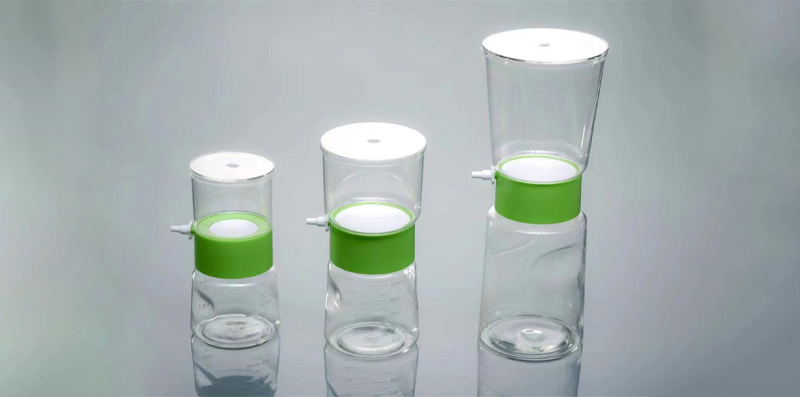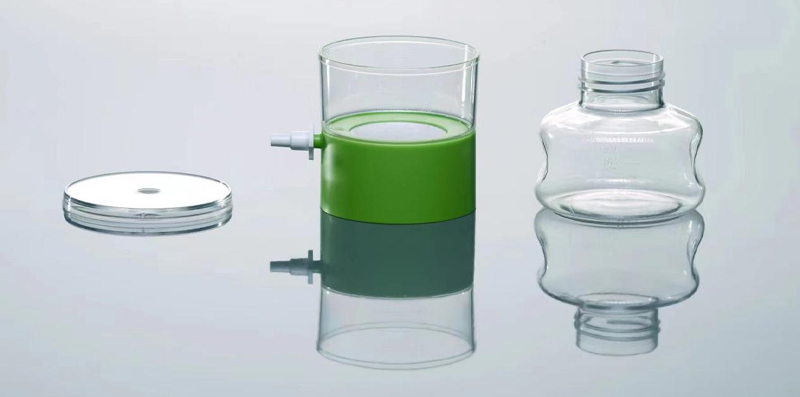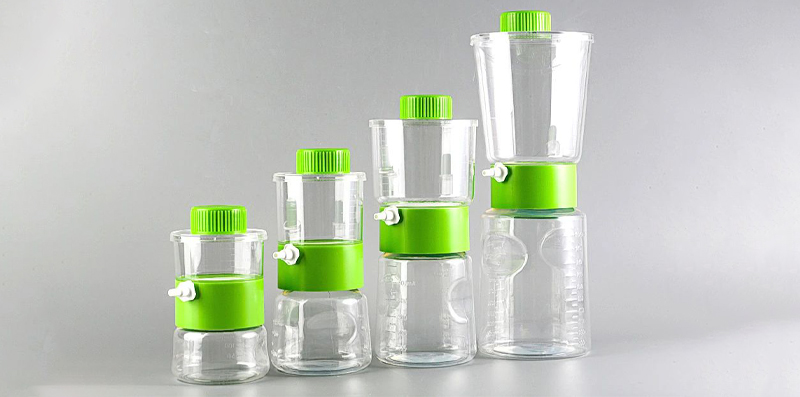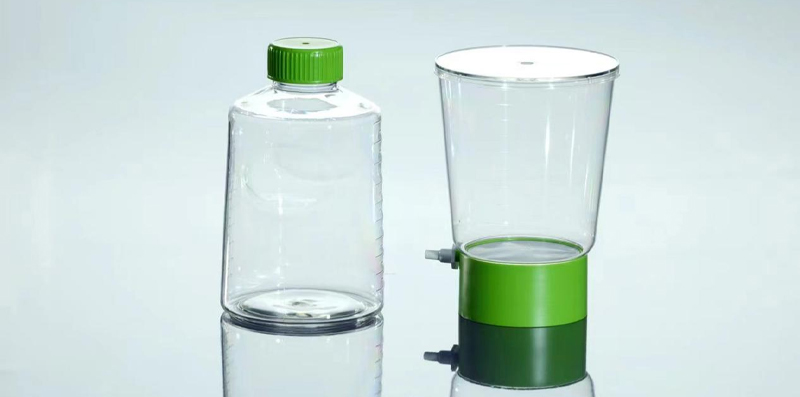Vacuum filters are used to efficiently filter tissue culture and other laboratory liquid samples by creating a pressure difference through a vacuum pump. Filtered samples can be stored aseptically in the matching solvent bottles, which are ideal for sterile filtration of cell culture media, buffers, and reagents, especially in the sterilization of large batches of media. In order to help you better understand and use the vacuum filtration system, Welso has compiled a series of frequently asked questions and answers to help users better understand the vacuum filtration system.

What is Filtration?
Filtration is the physical or mechanical separation of particles or components in a sample medium, such as liquids or gases, by introducing a medium through which only gases/liquids can pass through. The size divides sample into two parts.
The first part (permeate/filtrate) is the cleared/filtered sample, which contains only particles or molecules that are small enough to pass through the filter medium.
The second part (retentate/concentrate) is the sample material that is trapped by the filter media, and this part is usually solid as all the liquid sample passes through the filter.
What is the principle of vacuum filtration?
In vacuum filtration, a vacuum is created by expelling the air from the receiving bottle, inducing the liquid to suction and thus pass through the filter membrane (filtration). Because the liquid is vacuum-pressurized, the liquid passes through the membrane quickly, so vacuum filtration is more efficient than force filtration.
What are the components of a vacuum filter?
The Welso vacuum filter consists of a top cup, a connector, a filter membrane, a suction nozzle, a sealing gasket and a receiving bottle.

What are the components of a vacuum filter?
The Welso vacuum filter consists of a top cup, a connector, a filter membrane, a mouth, a sealing gasket and a receiving bottle.
How do I choose the right vacuum filter?
According to the liquid to be filtered, choose a vacuum filter with appropriate volume, membrane material, and membrane pore size.
What is the difference between different membrane materials?
The Welso vacuum filter range consists of three different membranes: PES, Nylon, and Hydrophilic PVDF.
PES membranes are used to filter general media and aqueous solutions, including polar or moderately polar solvents, neutral aqueous solutions. It cannot be used for chloroform, esters, amides and strong acids and bases.
How many capacities are there for vacuum filters?
150/250mL, filtration area 19.63cm2, suitable for the filtration of small amounts of samples, such as small volume buffers and reagents in the laboratory.

500/1000mL with a filtration area of 44.16 cm2, suitable for the filtration of medium samples, such as cell culture media in the laboratory.
What is the difference between the different pore sizes of the membrane?
The Welso vacuum filter range is available in two commonly used pore sizes: 0.22 μm and 0.45 μm.
0.22 μm for sterilization filtration of cell culture media, media, buffers and reagents; It can also be used for chromatographic pretreatment when the particle size is less than 3 μm.
0.45 μm for clarification of aqueous and viscous solutions; It is used for chromatographic pretreatment with particle sizes greater than 3 μm.
Can I use another container instead of a collection bottle?
No! The collection bottles and connectors of Welso vacuum filters are specially designed to ensure tightness and effectiveness during the filtration process. The use of container connection filters that are not resistant to negative pressure or that are not dedicated to filtration cannot guarantee filtration effectiveness and even pose unnecessary hazards.

How many times can a filter be used?
It is not recommended to reuse vacuum filtration system. Depending on the nature of the liquid being filtered, the filter can be used until it is clearly visible that the membrane is clogged or contaminated, or that the filtration flow rate drops significantly. When the membrane is blocked by impurities, continued filtration may result in reduced filtration efficiency or even contamination of the filtered sample, and a new vacuum filter should be replaced in time.
The above are some frequently asked questions about vacuum filtration systems, hope this information can be helpful to you.
You can visit the vacuum filtration system product page for more detailed product parameters, features and ordering information